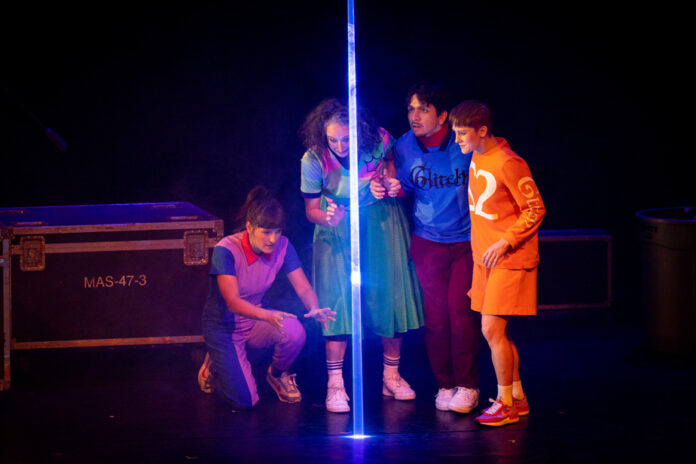“Experiencing a live show is not the same as experiencing a show in front of a TV or a computer. We offer these performances with the idea of making the arts accessible to everyone, equally,” explains Caroline Charbonneau, who is part of the small team of audio describers at Danse-Cité.
First of all, the audio describer must “soak up the work,” says Caroline Charbonneau, who holds a master’s degree in dance. To do this, they meet and question the choreographer in addition to attending rehearsals.
“The difference with audio description in cinema is that we cannot simply describe the visible elements, such as the settings or the entrances and exits of the characters,” she emphasizes, specifying that in the films, dialogue helps to follow the narrative thread.
“In dance, everything is movement, so we have no choice to be a little less objective, less factual. We get closer to poetry, in a certain way. We are going to bring a certain layer of interpretation, but […] we must leave enough freedom to the people who are going to hear us so that they can create their own mental image of the show. »
During such a performance, the theatrical experience begins with a tactile tour of the premises before the show.
“We will, among other things, walk the perimeter of the stage so that they can get a sense of the grandeur of it. If there are sets, props and costumes – and we have access to them – we will touch them to feel the textures, the dimensions. All this in order to provide more material so that they can create mental images during the show,” explains Caroline Charbonneau.
The audio descriptor then presents the main lines of the show, but also the gestures that the dancers will perform. “We will try to make them experience certain movements in their body which may be more complex to describe verbally,” she adds. For this stage, the accompanists of the blind people are called upon to make them move as the dancers will do later.
Finally, when possible, a meeting is planned after the performance between the performers, the audio describer and the blind audience.
Each blind person wears headphones. Thanks to an application on her phone, she can hear the live description carried out by the audio descriptor. However, this is not in the room so as not to disturb the dancers and other spectators. Installed in a recessed space, for example a dressing room, he describes what is happening on stage by watching the live video broadcast of the play.
After about a month of preparation, the audio describer wrote a text which includes all the elements of the show. However, he cannot simply recite it, since each performance is unique. “There are always nuances in interpretation,” argues Caroline Charbonneau.
“In audio description, we are not going to use technical dance vocabulary because not everyone knows it […] But there, we asked ourselves even more questions, because in the vocabulary that we usually use, there are perhaps words or expressions that young people will not understand,” recalls Caroline Charbonneau.
To find answers to her questions, she consulted a blind 14-year-old teenager.
“If we want to keep young people’s attention for 50 minutes, we have to find a way of speaking that will engage them and keep them on the edge of their seats,” argues the audio describer.















